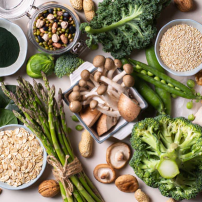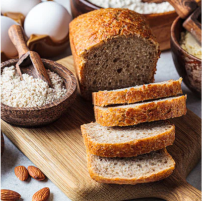Whether on a diet or just trying to make healthy choices for our children, we all find ourselves looking, often bamboozled, at food labels. Thankfully legislation in this area is growing and packaging is becoming more standardised in its nutritional labelling. With a bit of practice and some useful tools it can become easier to understand the information available and make better choices. We've put together some tips for understanding food labels to help you.
Understanding Food Labels: The Basics
Not everyone has a science background, or studied home economics in school. If you don’t know your good carbs from bad, or the difference between trans fats and calories leaves you confused, then start here. Otherwise feel free to skip ahead to the 'understanding food labels' lesson itself!
Calories
Calories are the amount of energy a particular food supplies - as a rough guide an adult needs about 2000 calories a day to fuel their body. However calorie requirements vary with gender, age, physical activity, pregnancy etc. and so it is important to consider this when assessing food intake.
Carbohydrate
Carbs are our body’s main fuel – it should provide about half of our energy. It is made up of three parts - fibre, starch and sugar. Sugar is referred to as a simple carbohydrate and starch and fibre are complex carbohydrates.
Sugars occur naturally in fruit, milk, honey etc. and also in forms that are refined (corn syrup, cane sugar etc.) and added to food in processing and baking.
Starch and fibre are present in rice, grains, pasta, potatoes.
These two types of carbohydrates are sometimes popularly called good (starchy) and bad (sugary) carbs. The truth is, there is really no naturally bad food, just food taken in the wrong amounts or processed to an unrecognisable substance!
Leftover energy from carbohydrates are stored in the body as fat. Starchy carbohydrates tend to release their energy in a slow sustained manner as opposed to the short sharp burst the body gets from sugar. As a result, they provide much more beneficial fuel and make up the foundation of the food pyramid.
Protein
Protein comes from animal and plant sources and is the building block of our tissues, especially muscle tissue. Approximately 15-25% of our food intake should be from protein.
Fat
Fat is present in plant (olive oil, avocado, nuts) and animal sources (oily fish, dairy and meat) Not all fat is bad. In a healthy diet, about 30 percent of your total daily calories can come from fat - but ideally we should limit our saturated fat intake to 10% of our total calories (e.g. full fat dairy, fat in meat) and opt for more fish and plant based oils.
Trans fats should be avoided where possible as they are associated with high cholesterol (LDL) - they arise from processing fats and so are found in many margarines, deep fried foods, and factory-made baked goods.
The Food Pyramid
And finally have you ever seen a nutritional label on an apple? The more we eat whole foods, unprocessed, without the addition of salt to preserve and sugar to hide the taste of the salt, the healthier we will be. So remember each week to put foods in the trolley that you can enjoy just as nature intended.
Tips for Understanding Food Labels
There are a few things to get your head around when it comes to food labels. We've outlined what you need to know and be aware of below with tips for understanding food labels.
Ingredient lists
As a rule of thumb, if it feels like you are reading Latin or the list is as long as your arm, it's probably best to put the packet down!
When it comes to understanding food labels, you should know ingredients are listed in order of quantity. And for many products you should be able to guess what the top 3 should be. However, alarm bells should ring if for example sugar is the second ingredient in a food that you wouldn’t normally think of as sweet, such as bread or a pasta sauce.
Nutritional Information
These are the most complex labels to decipher but once you can break down the food into your basic food groups, it makes a lot more sense.
Look first at the calories AND at the serving size
All labels are standardised at 100mg or ml of the product. A serving may be less or more than this. You may end up eating a bag of crisps with 3 servings in it thus 3 times the calories that you may think at first glance.
Then see what makes up the calories?
Is the food high in fat or sugar? Low in salt and high in fibre?
For example: A breakfast cereal will be mostly carbohydrate. A healthy breakfast cereal should be made of complex carbohydrate (starch/fibre) so it will be important to see how much of the cereal is ‘of which sugars' - compare a bowl of bran flakes with corn flakes to find out.
A tray of minced meat should be made mostly of protein. The label should indicate what percentage of the meat is fat, or if salt has been added... this is where the detail comes in.
Salt Content
This can be confusing. If it is labelled as sodium (common in the USA) you need to multiply x 2.5 to get the salt content.
The Irish heart foundation have produced and excellent information card designed to help you shop with advice on salt and a ‘traffic light system’ for food labels.
Once you're happy with the ingredients, calorie count per serving and salt and sugar content, you can make an informed decision before adding it to your basket.
Are you looking for more health advice? Then read our blog 'Your Ultimate Guide to Healthy Eating with Croi'
Checked and updated: 2 September 2021













